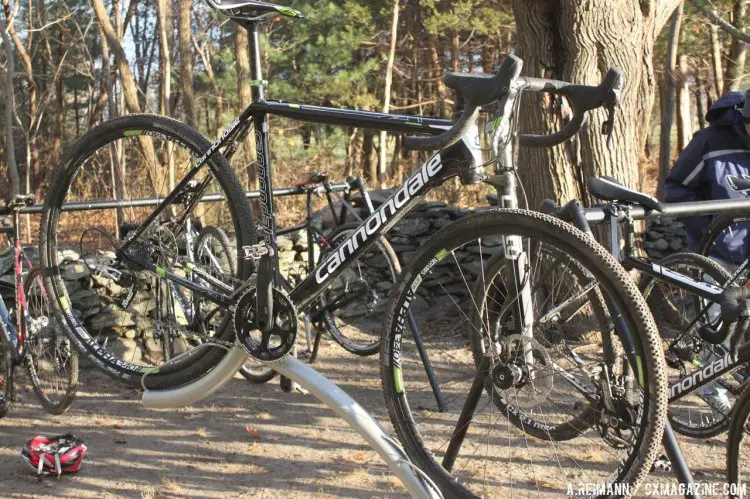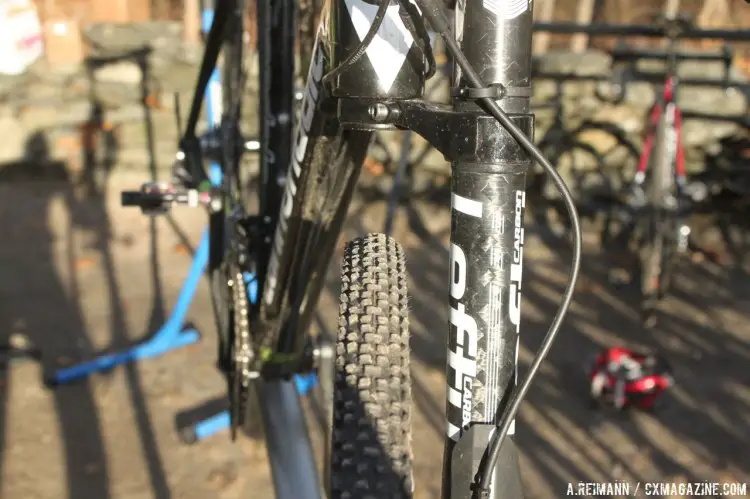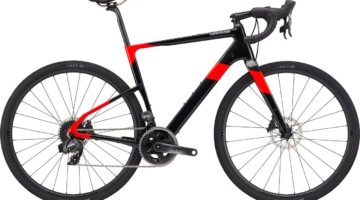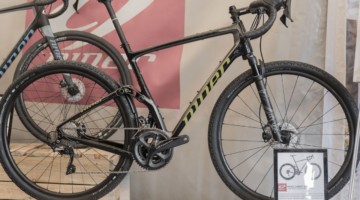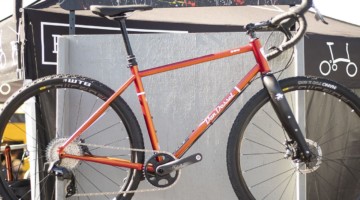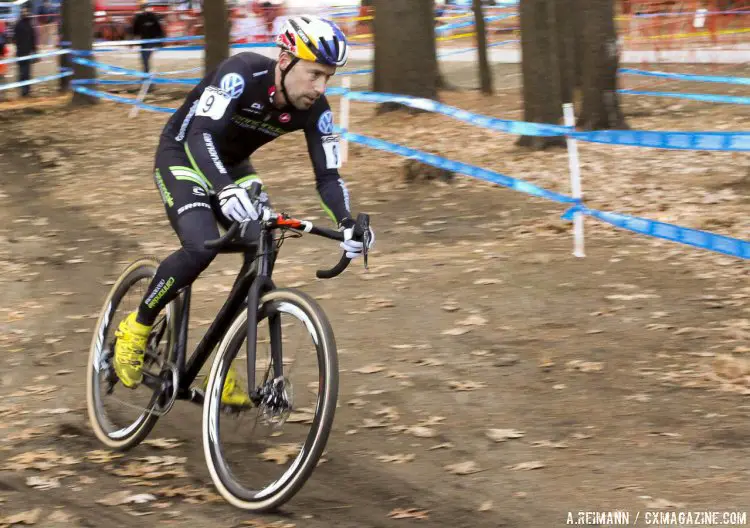
Cannondale’s prototype thru axle SuperX spotted at NBX in Warwick. © Andrew Reimann / Cyclocross Magazine
(Warwick, R.I) – Cannondale is developing some new fork options for its carbon SuperX cyclocross bikes.
At the NBX race, I was able to get a closer look at the Cannondale SuperX with a Lefty fork built by Cannondale’s Natick store in Massachusetts. The bigger news, however, was the brief spotting of a prototype bike Johnson was riding for only a few laps during the Men’s Elite Race on Sunday.
Although no details were confirmed, the bike was clearly not the current production model. It appears as if Cannondale has decided to move in the direction of thru-axles, and what better course to text the rigidity of the design than the root-filled paths of the NBX Gran Prix. I was not able to get a closer look at the model, although I did notice that the seatstays looked more akin to those on the current CAADX, with a horizontal, tubular bridge connecting the stays.
I caught up with the mechanics of Cannondale’s Natick store in Massachusetts responsible for creating the Cannondale with the carbon Lefty fork, who gave us a few insights on the model. For one thing, it can currently only be fitted to a frame size of 52cm or less. According to Andrew Thompson, one of the mechanics who helped put the build together, this is due to the length of the headtube on these smaller sizes, which can accommodate the clamp distance of Cannondale’s lefty fork. If the level of interest for suspension forks on cyclocross bikes begins to peak, there might be consideration for redesigning the full range of sizes.
I was given the opportunity to take the bike on the course during my race, although as a rider who is used to a 56cm frame, I limited the test to riding a few areas off the course. It is certainly a interesting bike with a lot of upside potential, especially for courses where the risk of flatting over rocks and roots are high, such as NBX and the Supercross Cup.
Still, the bike, which currently sports 40mm of travel, might be a hard sell under the current rules. Although the majority of racers don’t participate in UCI races, many riders who would purchase a high-end model might have aspirations to race in one over the course of the next few years, and as the current regulations stand, this bike doesn’t comply with the UCI guidelines for cyclocross bikes. Still, over three years ago, people were saying the same thing about companies investing in disc brakes for cyclocross bikes, which goes to show that the UCI is willing to change with the times.
The second big drawback is the extra time a wheel change will take. Current owners of Lefty forks know that removing a wheel involves allen keys and pivoting the brake caliper upward as the wheel is taken from the right rather than downward. This is nothing more than a slight inconvenience when taking the wheel off to transport the bike, but when time is limited and mechanics are attempting to make a wheel change between laps, precious seconds that could have been spent further prepping the bike are lost.
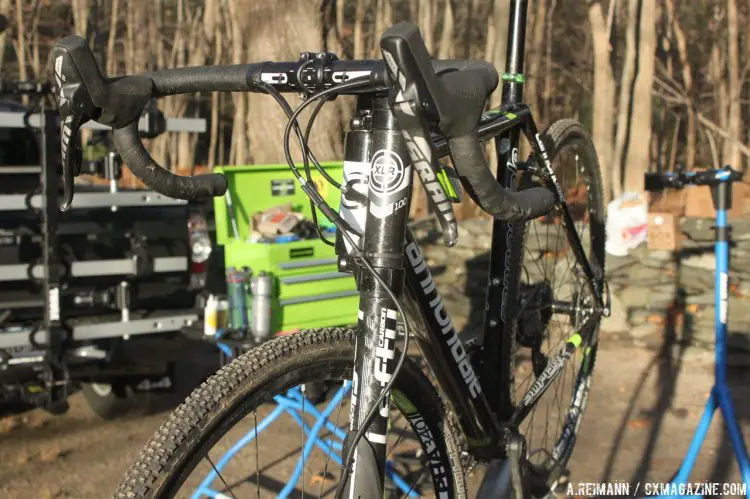
Cannondale is looking into carbon steerer tubes to cut the weight back even further. © Andrew Reimann / Cyclocross Magazine
Of all the drawbacks, weight is not one, which likely comes as a surprise to many. In the short time I spent talking with the mechanics, at least four different spectators came forward to ask about the weight of the bike. While the fork adds some weight, it’s not as much as you would expect as the total claimed weight sits at a sub-19lbs, not spectacular for a full-carbon bike, but impressive for a rig that dampens the chattering areas of many courses.
Currently, there are even talks underway of installing a carbon steerer tube that would take even more weight off the the bike. Tim Johnson has admitted that back pain has plagued him all season (although this let up briefly during the C1 day of the KMC Cyclo-cross Festival, where he took second). Not only would a suspension give him a respite from rough course conditions, but he would not be too bogged down shouldering the bike during a run up. Could this be a glimpse at the future of cyclocross, or will suspensions remain on the short track for the 45-minute efforts?
As the details pour in, we will keep you informed with the developments of both models spotted at NBX.













